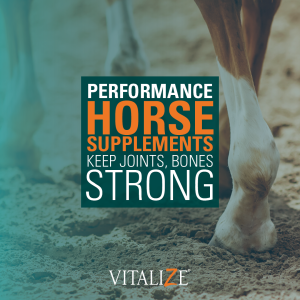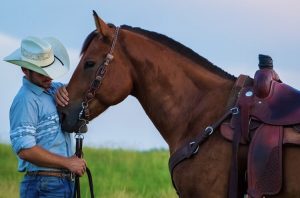
As summer rolls on, temperatures are heating up around the country. Envision yourself out riding with a friend on a hot day. After working awhile, her horse has formed a thick foam under the reins, saddle pad, between his hind legs, and is dripping from his belly. Your horse, on the other hand, is mostly dry.
 Pop Quiz: Which horse is in danger?
Pop Quiz: Which horse is in danger?
While the one who is excessively sweating may seem to be the right answer, that is incorrect. The presence and further evaporation of sweat is how the horse naturally uses thermoregulation to maintain a healthy body temperature of 99.5 to 101.5° F. The dry horse, commonly called a “non-sweater,” could be suffering from anhidrosis.
What is Anhidrosis?
It is a condition where horses do not sweat adequately, which causes a build-up of internal heat and increased body temperatures, sometimes reaching nearly 110° F! This insufficient body temperature regulation not only decreases the horse’s ability to perform, but also puts him at risk from hyperthemia and heat stroke. Most commonly affected by the condition are dark-colored performance athletes who live in a hot, humid environment. However, anhidrosis can affect any horse.
What causes Anhidrosis?
While the direct cause of anhidrosis is not known, it is often thought to be associated with the over-stimulation of sweat glands due to environment (high humidity prevents evaporation of sweat) or exercise stress hormones, causing the glands to shut down. Others suggest it could also be associated with metabolic or hereditary conditions.
Signs of Anhidrosis
The signs of anhidrosis vary in severity, so it is important to know your horse’s normal behaviors. Consult with your veterinarian for a proper diagnosis if you observe signs including:
- Lack of sweat
- Increased Respiratory Rate and Rectal Body Temperature AND takes > 30 minutes to return to normal after exercise (Normal RR: 8-12 breaths/min., Normal BT: 99.5-100.5°F)
- Decrease in performance when temperature increases, lethargy
- Heavier breathing than expected at rest and during/after exercise
- Poor skin and coat condition
Prevention of Anhidrosis:
- Always allow shade and clean, cool water 24/7 to decrease environmental stress.
- If stalled, turn out your horse at night instead of day to avoid the hottest hours of the day.
- Keep the barn well ventilated with fans through the barn aisle and in the stalls.
- Plan to ride in the morning or evening (coolest hours of the day) and always allow a long cool-down.
- Shower your horse with cool water after riding and scrape or dry off excess water.
Treatment of Anhidrosis:
The vet may conduct a “sweat test” by injecting terbutaline subcutaneously to initiate the production of sweat glands. By observing clinical signs, your vet can presumably confirm whether your horse has anhidrosis, however lab tests are also a diagnosis option. Treatment they may suggest includes:
- Limiting exercise.
- Always accommodate your horse with a cool environment (shade, water, fans, misters, cold hosing) .
- Supplementation of electrolytes.
In addition, Vitalize supplements, which all contain Amaferm, may work to circumvent the effects of anhidrosis. Recent research shows Amaferm decreases respiratory rates and rectal body temperatures upon consumption and therefore helps regulate body temperature. While there is no sure treatment for anhidrosis, Vitalize® Equine Recovery Gel, which contains both electrolytes and Amaferm, paired with good barn management, could be tremendously beneficial to horses suffering from this condition.
For those familiar with Vitaferm HEAT, our cattle body temperature regulation supplement, the Vitalize Equine Free Choice Mineral is a similar product that may help reduce body temperature and respiration of pasture horses. To learn more about the Vitalize products, visit https://vitalizeeq.com/equine-products/.

